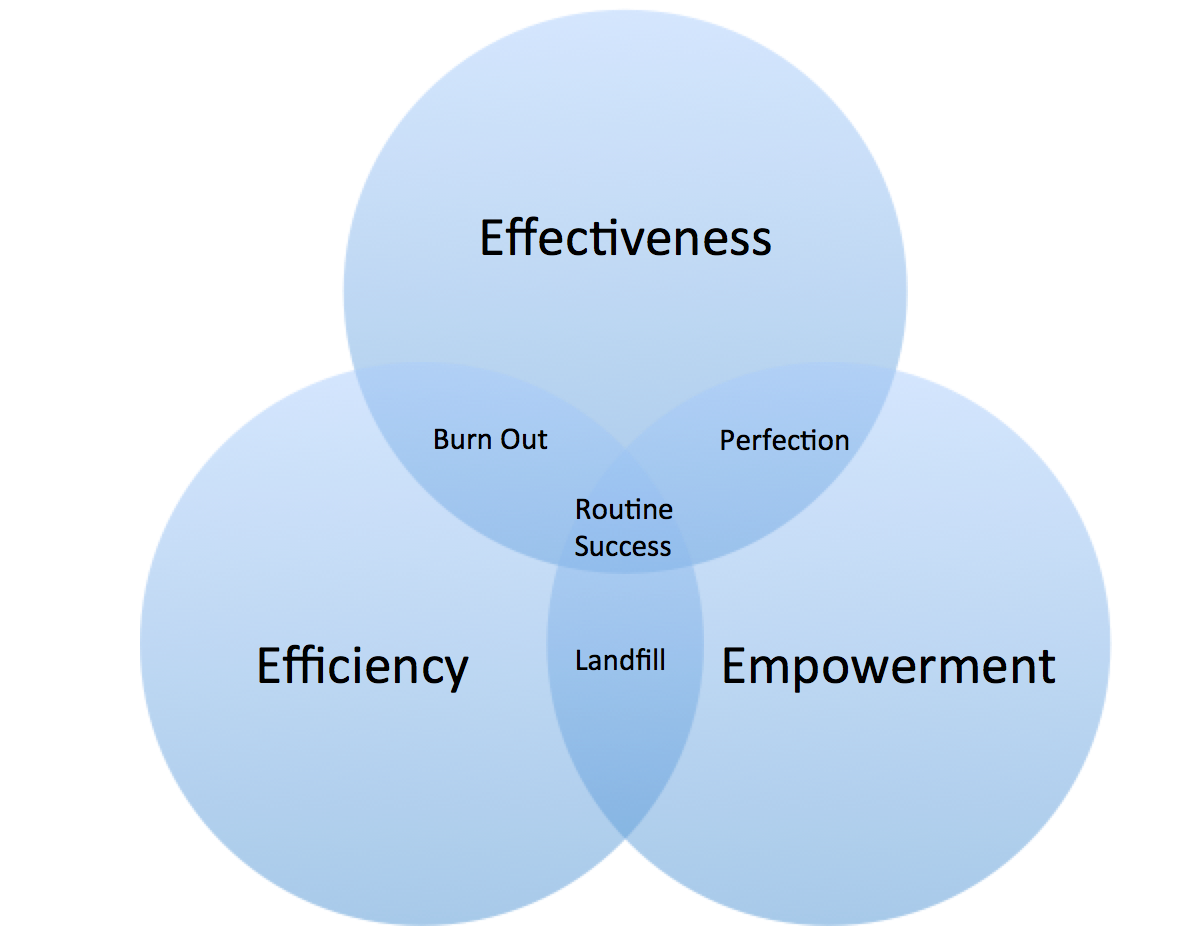Many organizations overly focus on how things are done. Often people debate about the amount of time that should be spent planning versus doing, to avoid wasted time planning what will inevitably change. Usually the debate is between planning for a long period of time (perhaps 1 year) versus planning for a short period of time (perhaps 2 weeks).
But the reality is, there’s no right duration for every project, ie: 2 weeks always. There’s not even a suggested duration, ie: no more than one month at a time. And that’s because the amount of time depends on what the project entails.
For example, if you’re building a note taking app for the iPhone, perhaps you would have something meaningful to show in 2 or 3 weeks. But if you’re building pacemaker software, likely you won’t have anything to show in 2 or 3 weeks and you may need to plan meticulously in advance. If you’re building the next generation airplane or erecting a skyscraper, you may need to plan many years in advance.
Overall, the focus on duration, is a focus on How things are done. Organizations tend to focus in excess on the process at the expense of other factors. This focus on How things are done is a focus on the efficiency of what is being done. Always in search of the best way to do things. The “right way” to do things.
I created this diagram to show that there are other factors that matter as much as efficiency, and what often happens when they are neglected.
Effectiveness is doing the right thing. This factor is often neglected because it’s not as straightforward to ask the question: “What should we be doing?” Ultimately, there’s no right way to do the wrong thing.
Empowerment is enabling those that do the work to make decisions that affect the work they do. What often happens that leads to project failure, regardless of duration, is the separation of decision making from implementation. An example of this might be baking a cake. The decision would be to make a cake. Also, what often happens is the decision maker decides how to do the work too. In the case of a cake, they find a recipe. Then, they hand the recipe off to someone else. Or they split up the steps in the recipe and hand them off to several different people:
- They send one person to get flour
- They send one person to get eggs
- They send one person to get a bowl
- They tell these people to hand the ingredients off to another person
- They give a recipe to that person and tell them to follow the instructions exactly
- etc…
The problem with separating decision making from implementation, is that the people doing the work can’t adapt as they go. They can’t apply what they learn to make course corrections. If the store didn’t have the necessary bowl, the person getting the bowl won’t know what would be a good substitute because they don’t know why the bowl is needed.
Efficiency + Empowerment
What’s interesting are the areas of overlap, when you have efficiency and empowerment, without effectiveness, you tend to do more things that shouldn’t be done. You can quickly accumulate a landfill of unnecessary work.
A great example of this are people online that obsess over building massive followings on social media or in newsletters, and they succeed at efficiently signing up 1000s of people by providing something for free. Then, when they go to sell a product, which was their ultimate need, they can’t get anyone to buy it, because they’ve attracted people that want things for free and aren’t willing to pay.
Efficiency + Effectiveness
When you have efficiency and effectiveness, but no empowerment, you tend to see people burn out. They cycle between efficiency and effectiveness. Often the focus on effectiveness is a personal, ethical motivation. If people can’t make decisions, they ultimately can’t control doing the right things, so they tend to become discouraged.
This is evident in customer service policies in just about every company. On the one hand, the mission statement puts customer satisfaction first (effectiveness). But, whenever someone makes an exception to make a customer happy, that costs the company even a penny, they get whacked over the head (efficiency). These people aren’t empowered to do the right thing, so the disincentives will encourage efficiency in not spending money while the customer is neglected.
Effectiveness + Empowerment
When you have effectiveness and empowerment, without efficiency, which is rare, nonetheless you tend to see people endlessly obsessed with paralyzing perfection.
This is manifest in products with ridiculous claims like “hand crafted, artisanal toilet paper.” And while someone toiled endlessly to create what they envisioned to be perfect toilet paper, it turns out to be no better than machine crafted toilet paper. And therefore the excessive price is unjustified because there’s no ultimate difference in quality that customers are willing to pay for.
Efficiency + Effectiveness + Empowerment
The trifecta of all three elements leads to routine success. I say routine, because failure will also be in there, just not as often.
